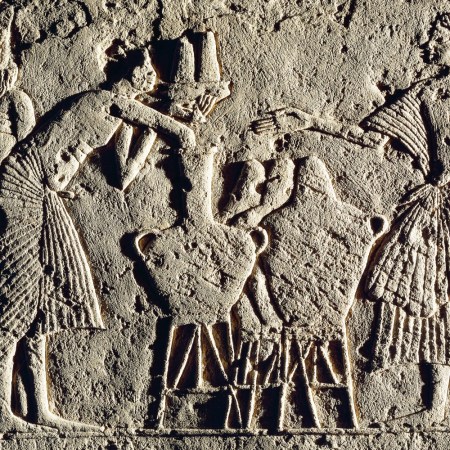The U.S. President and many of his key officials cram onto a boat so they can get a up-close, first-hand demonstration of the vessel’s massive, largely untested new weapon. That was the scenario on the USS Princeton back on February 28, 1844. The steam frigate had at least 350 passengers (including President John Tyler), but the stars of the voyage were its pair of massive 27,000-pound cannons, dubbed “The Oregon” and “The Peacemaker.” The result was a uniquely foreseeable tragedy that could have been much, much worse.
On a happier note (albeit a creepy one), this gruesome disaster enabled President Tyler to win the heart of a traumatized younger woman.
Journey back to the days when presidential security had yet to become a priority.
Already an Accident
No one expected Tyler to reach the presidency, even after he was elected vice president in 1840. The celebrated hero of the Battle of Tippecanoe, General William Henry Harrison, topped the ticket and was clearly the star of the show. The campaign’s very slogan seemed to highlight that Tyler was an afterthought: “Tippecanoe and Tyler Too.” Making it all the more shocking when Harrison proceeded to give a nearly two-hour inaugural speech in a freezing rainstorm, catch a cold, and die on April 4, 1841, barely a month after taking the oath. (He still holds the records for longest inaugural address and shortest time in office.)
Harrison was the first president to die on the job and Tyler became the first person to occupy the Oval Office without being elected to the presidency. To make things even stranger, Tyler did this as a member of the Whigs, a short-lived party that had first competed in an election in 1834. The nation was struggling to come to terms with what it meant to have a leader it didn’t actually vote for at the same time it became clear Tyler had little in common with the rest of his party. Indeed, he felt no particular loyalty to it and its members returned the sentiment. Tyler fell out with the Whigs early in his presidency and would suffer the indignity of watching them nominate Henry Clay instead of him as their 1844 candidate.
Tyler’s home life was equally painful. He had married Letitia Christian in 1813. Together they had eight children (seven survived until adulthood). But by the time he reached the White House, a stroke had left her an invalid. She died at 51 on September 10, 1842. Tyler soon settled on a woman to be his new spouse. Tyler and his first wife had both been born in 1790, but the widower’s second wife, Julia Gardiner, arrived a bit later. OK, a lot later. She was born in 1820—at the time, Tyler had three children older than his intended new bride. Having first met Gardiner early in 1842, Tyler proposed to her on February 22, 1843, just a year after their initial encounter and less than six months since the death of his wife. Julia was 22, John was 52.
Gardiner turned Tyler down. They stayed in contact—it’s possible she might have eventually agreed to marry him, but she was in no rush to do so. (She made plans to take a lengthy trip to Europe with her family.)
Thus Tyler was a man adrift even before he boarded the USS Princeton for its voyage down the Potomac River on February 28, 1844.
A Personalized Approach to the Navy
Captain Robert F. Stockton had a deep connection with the USS Princeton. Indeed, he helped design it—with the assistance of inventor John Ericsson—and partially footed the bill. (Stockton came from a prominent New Jersey family: His grandfather signed the Declaration of Independence, his father was a U.S. Senator, and their family home would serve as the governor’s mansion.) Even by the more casual standards of the day, Stockton had been given tremendous latitude to follow his personal whims. Commodore William Crane, chief of the Navy’s Bureau of Ordnance and Hydrography, was apparently troubled by the project but failed to alter Stockton’s plans. The end result was a vessel whose innovations included those massive cannons, which allegedly could launch a 200-pound cannonball up to five miles.
When the day came for its demonstration, the event was more of a social function than a military one. Attendees included President Tyler, much of his cabinet, and former First Lady Dolley Madison, as well as Julia Gardiner and her father, David. As the journey proceeded, the Peacemaker fired off two cannonballs. Each reportedly traveled two miles. With the third, however, a fissure emerged in the cannon. Chunks of hot metal showered onlookers.
The Carnage That Nearly Became a Constitutional Crisis
America was still in shock from the death of William Henry Harrison. When Tyler became president, the vice presidency was left unoccupied—the procedure for appointing a new vice president wasn’t officially determined until the ratification of the 25th Amendment in 1967. If Tyler died too, what would occur?
Today, we know when a president passes, the successor is the vice president, followed by the Speaker of the House, then the President Pro Tempore of the Senate, then Secretary of State, and so on down through the cabinet. But the U.S. didn’t lock down that pecking order until the Presidential Succession Act of 1947. Similarly, the designated survivor rule wouldn’t go into effect for over a century. (This ensures an individual in the line of succession who is eligible for the presidency is kept in a safe location during the State of the Union or other events that draw top leaders.)
For that matter, the Secret Service wouldn’t be founded until 1865 and the telegraph wouldn’t have its initial transmission until later in 1844.
What if the USS Princeton had caught fire and sunk? President Tyler could have been killed and the government would have struggled to:
-Confirm his death
-Spread the word of his death
-Figure out exactly what to do about his death (again, no vice president and no Presidential Succession Act)
Luckily, the majority of passengers were unharmed, including Tyler. But there were still horrific consequences.
The Actual Carnage
Eight people were killed, including Secretary of State Abel Upshur; Secretary of the Navy Thomas Gilmer; Captain Beverly Kennon (Chief of the Bureau of Construction, Equipment, and Repairs); Virgil Maxcy, the Chargé d’Affaires (U.S. envoy) to Belgium; a slave named Armistead who served as President Tyler’s personal valet; and David Gardiner, father of Julia. Over a dozen more people were injured, including Stockton himself.
But since Tyler survived, it was just a tragedy instead of a full-on calamity. Which may be why the nation chose to treat it as not that big a deal.
Surprisingly Small Repercussions
Tyler personally downplayed the explosion. He wrote to Congress that it “must be set down as one of the casualties which, to a greater or lesser degree, attend upon every service, and which are invariably incident to the temporal affairs of mankind.”
Stockton continued to serve in the Navy until retiring and going into politics. He became a U.S. Senator, just as his father was before him. Among other honors, the city of Stockton in California is named after him.
The inventor John Ericsson had a falling out with the Navy, but found success in the civilian world. His design of the legendary ironclad the USS Monitor for the Union during the Civil War fully restored his reputation.
Bizarrely, the only real professional casualty may have been the man who unsuccessfully objected to the USS Princeton, Commodore Crane. He killed himself in his Navy Department office in 1846.
Even more bizarrely, the longest lasting impact of the tragedy was a presidential marriage.
From Mourning Comes Matrimony
It’s often reported that when Julia Gardiner discovered her father had died in the explosion, she fainted into President Tyler’s arms. And while it’s possible they may have eventually married no matter what, there is no doubt that her father’s abrupt death greatly accelerated the timetable. Indeed, the pair wed on June 26, 1844, less than four months later, giving Tyler another milestone, as he became the first president to marry in office. Julia was 24. Tyler was 54, five years younger than her late father.
The two stayed together until John Tyler’s death on January 18, 1862 at the age of 71. His passing inspired a memorably vicious obituary in the New York Times. It begins: “JOHN TYLER, of Virginia, the only Ex-President resident in the seceded States, is dead.” (Tyler had died in his native Virginia in the midst of the Civil War.) The obit summed up his presidency with a single devastating sentence: “His treachery to all men and parties, his total loss of popularity, and the embarrassment and confusion which he brought upon the country, are matters of history—though they are all now lost sight of in the later and more infamous appellation of traitor.”
Yet the Tyler line lived on. Julia survived another 27 years, dying on July 10, 1889. She had enabled Tyler to have another seven children and through these offspring he achieved a feat of longevity that is nothing short of astounding. At the time of this writing, John Tyler has two grandchildren through his offspring with Julia who are still alive. Remember, this is a man born in 1790—he had already turned 18 when Abraham Lincoln was born. Somehow three generations of the Tyler family have spanned four centuries, starting with a man born at a time when the average American life expectancy was under 40.
And he owes it all to a brief, brutal, and near fatal ride down the Potomac.
This article appeared in an InsideHook newsletter. Sign up for free to get more on travel, wellness, style, drinking, and culture.

























